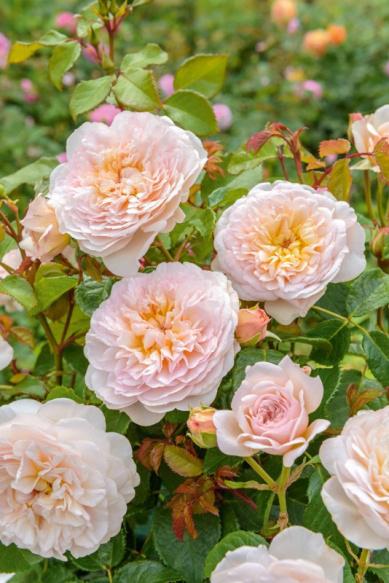Austin English rose “Emily Bronte” is a 2020 introduction that will be available for purchase at David Austin Roses this coming spring. [Photo by Linda Cobb] Hide caption Anyone who knows me knows that I love roses. To be exact, I love David Austin English Roses. English roses are a very special kind of rose. Sixty years ago, rose breeder, David C. H. Austin, Sr., spent many years trying to cross a hybrid tea rose with an old garden rose. He began crossing roses on his Shropshire English farm in the 1950s. His goal was to grow lush, fat, full re-blooming roses with their well known old-fashioned delicious fragrance intact. He spent years crossing modern climbers and the well known hybrid tea roses with Damask and Gallicas roses. Finally, in 1961, he produced his first English rose, “Constance Spry.” But there was a problem. ”’Constance Spry” only bloomed once a growing season. Dedicated to producing a line of roses that repeat flowered with that big scent that the old garden roses had was David Austin’s primary goal. He named this group of roses English roses. Since then they have been categorized as shrub roses. Never one to shy away from a challenge, Austin kept at it and in 1969 the first repeat blooming rose was born, ’Wife of Bath.” It took years to get all the colors introduced into the English rose spectrum. We owe David Austin, Sr. a huge debt of gratitude. Or at least I do, as this man single-handedly improved my life with his gorgeous roses. Today there are about 200 different varieties of English roses, each one more gorgeous than the next one. The form of English roses is a big deal. There are single flowering ones, semi doubles, rosette-shaped, deep cupped, shallow cupped, recurved, or the bud flower. Take your pick. Colors range from pure white to cream, pinks, crimsons, reds, mauve, lilac, yellow, apricot, peach, and then there is that copper color of the famous Pat Austin, a rose named after Austin’s sculpture wife. Austin not only perfected the shapes of his roses, […]






